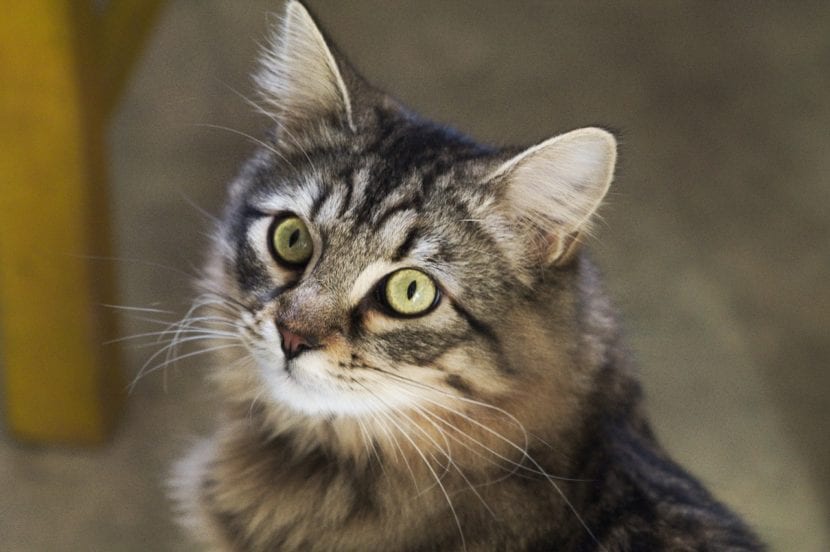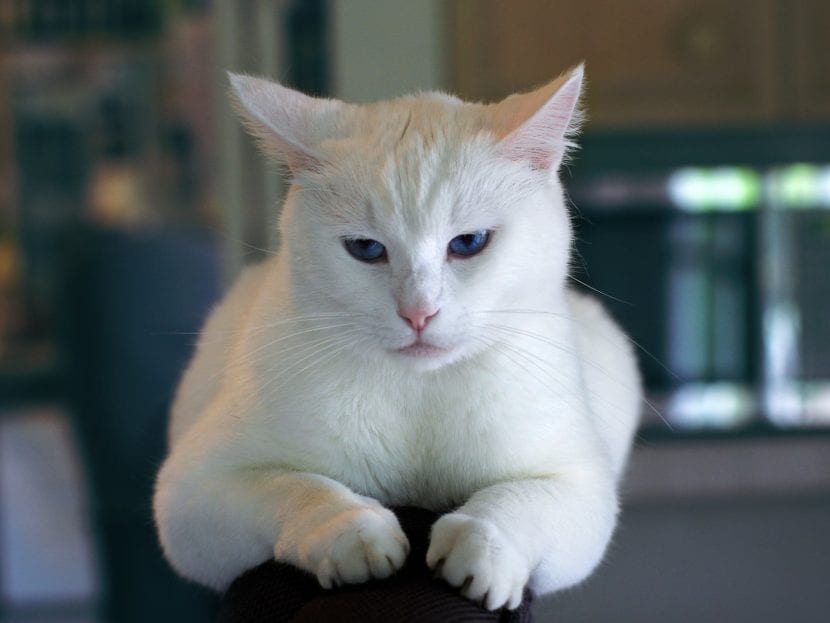
All of us who live with a cat know that they are very careful with their personal hygiene: not only do they spend a good part of their day grooming themselves, but they also need their litter tray to be always clean. So, when he urinates where he should not, we have to worry and take him to the vet as soon as possible.
Why? Because there are several diseases that you can suffer from, and incontinence in cats is one of the most common problems.
What is urinary incontinence?

First of all, we are going to explain what we mean when we talk about urinary incontinence. Well this is nothing but the developing inability to control the muscles of the urethra, so the sphincter does not remain closed. As a consequence, the affected person cannot decide when to urinate, but constantly suffers losses.
It never appears "just". There is always a reason, and it will be up to us to find out why it happens to our cat.
What are the symptoms?
To find out if you suffer from incontinence, we must pay attention to whether these symptoms appear:
- Wet abdomen and legs
- Strong smell of urine
- Dermatitis
- Urine residue around the house
- Swelling of the penis or vulva
- Drops or pits of urine when the animal stands up
- Inflammation or dermatological (skin) diseases
What are the causes?
There are many causes that cause incontinence in a cat, e.g.:
- Old age: cats that are over 10 years old can suffer from it.
- Spaying or neutering: it is not very common, but all operations have risks, and if you touch something that should not be done, it can cause incontinence. But I have to say that of the cats that I have taken to neuter - and there have been many (about 15) - none have had this problem.
- Stones in the bladder.
- Tumor in the bladder.
- Leukemia.
- Diabetes.
- Obesity.
- Stress.
- Congenital deformations: when the bladder or urethra are not located in the place they should.
- Trauma to the pelvis, hip, or spine.
- Neurological problems.
How is it diagnosed and treated?
Once we suspect that he is unwell, we will take him to the vet where they will do a physical exam, urine and blood tests, X-rays and other tests to find out what the cause has been. A) Yes, will give you a treatment that may be to administer hormones if it has been due to neutering or spaying, surgery if it is a tumor, or a change in diet if the problem lies in the excess weight of the animal.
But sometimes, if the incontinence is very severe or chronic, it may require a lifelong catheter or cystostomy tube in order to drain urine. What's more, you have to be very patient and give a lot of love, as this will make you feel calmer.
In the event that it is chronic, we recommend putting more sandboxes around the house, cleaning it every time we find it dirty to prevent infections, and placing waterproof fabrics on the surfaces where you spend more time including your bed.
I hope that with these tips your furry is better 🙂.
